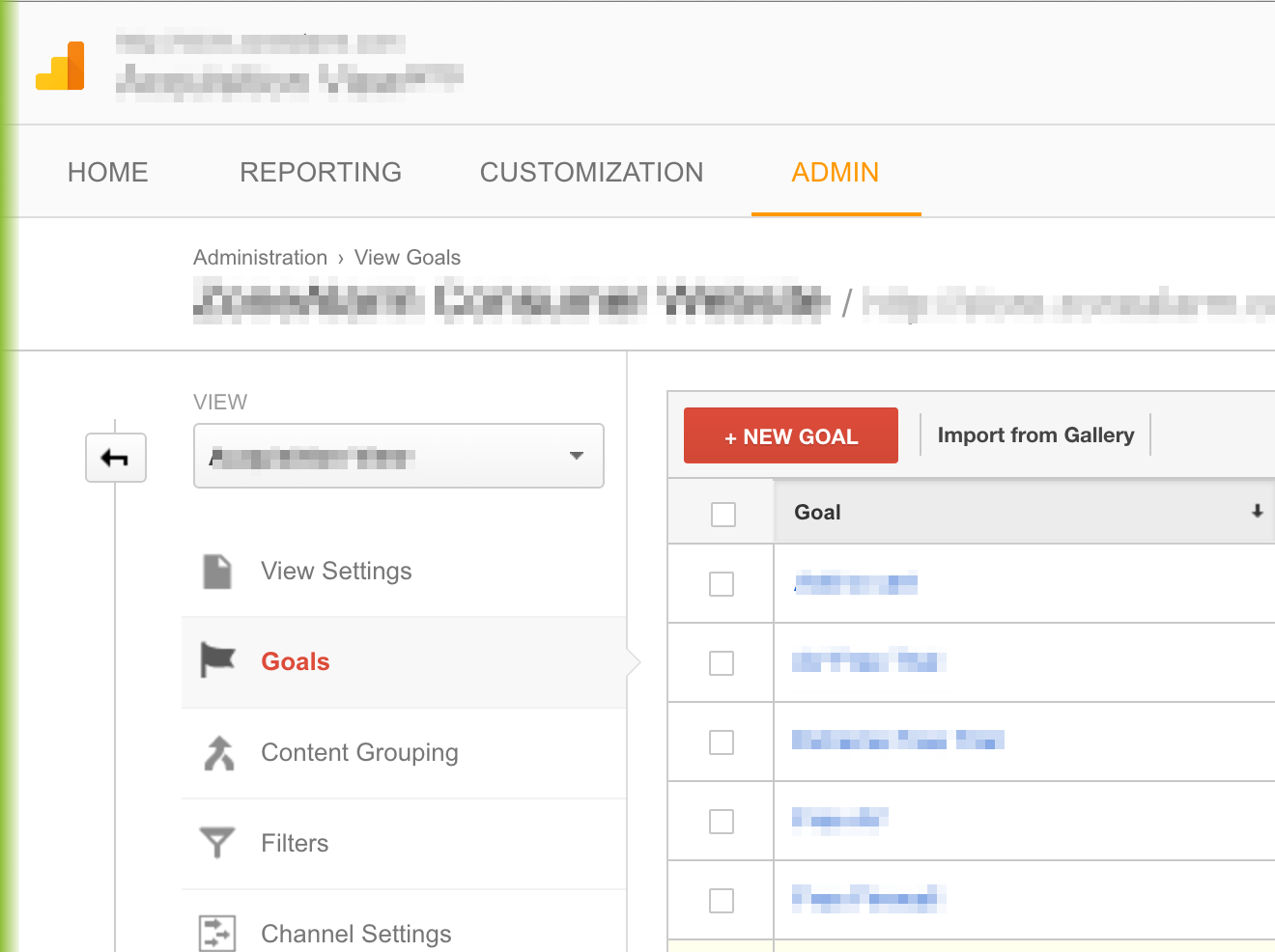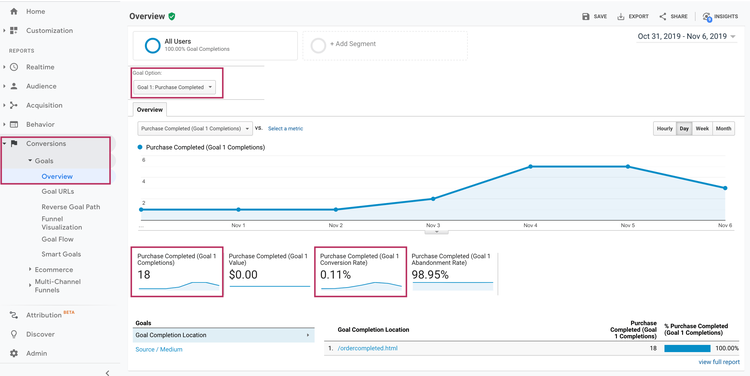Discover What Data Is Google Analytics Goals Unable to Track
Discover What Data Is Google Analytics Goals Unable to Track
Blog Article
Discover the Limitations of Google Analytics Goals: Revealing the Information Types That Remain Untrackable
As businesses increasingly count on data-driven decision-making, recognizing the constraints of devices like Google Analytics comes to be extremely important. While Google Analytics Goals offer beneficial insights into customer interactions, there exist information types that avoid monitoring, presenting obstacles to a comprehensive understanding of customer behavior. These untrackable data kinds increase inquiries about the accuracy and efficiency of the analytics information that organizations heavily rely upon for their electronic strategies. Interested to discover the surprise blind areas in your information analysis process?
Insufficient User Journey Tracking
Incomplete individual trip tracking within Google Analytics can impede the capability to properly analyze user behavior. When the individual trip is not totally tracked, there are spaces in the information that stop a thorough understanding of just how users communicate with a web site. This lack of understanding can cause missed out on possibilities for optimization and improvements to the individual experience.
One typical problem with incomplete customer trip tracking is the failure to see the full course that customers take previously finishing an objective or leaving the website. Without this details, it is challenging to determine where individuals may be coming across obstacles or rubbing points that prevent them from converting. Additionally, insufficient monitoring can obscure the effect of particular marketing initiatives or site adjustments on customer habits.
To address this restriction, it is important to establish up proper tracking mechanisms within Google Analytics to capture the entire customer journey. This might entail establishing up occasion tracking, goal funnels, or using devices like Google Tag Supervisor to guarantee that no essential communications go unrecorded. By getting a thorough sight of the user journey, web site owners can make even more educated decisions to enhance individual engagement and drive conversions.
Acknowledgment Obstacles
Browsing through attribution difficulties in Google Analytics requires an extensive understanding of just how different touchpoints add to the general conversion procedure. Attribution challenges develop from the complexity of modern-day customer journeys, where users interact with several channels before transforming. Google Analytics offers different attribution models like initial touch, last touch, and straight, each offering a various perspective on just how credit history is appointed to touchpoints along the conversion path. These models might not constantly properly mirror the true effect of each touchpoint on the conversion.
One common acknowledgment difficulty is the difficulty in connecting conversions to the correct resource, particularly in cases where customers interact with numerous channels prior to converting. Additionally, cross-device monitoring positions an additional attribution challenge, as individuals usually switch over in between devices throughout their journey, making it challenging to track their interactions effortlessly.
Offline Conversions
Given the obstacles linked with associating conversions properly in online channels, the measurement of offline conversions provides a significant chance for marketing experts seeking an extra extensive understanding of their consumers' journey. Offline conversions describe activities that consumers absorb the real world, such as making purchases in brick-and-mortar shops or over the phone, attending occasions, or engaging with printed materials - what data is google analytics goals unable to track. These conversions are important for companies that run both online and offline, as they provide important insights right into the performance of advertising and marketing campaigns throughout numerous touchpoints
Tracking offline conversions typically presented a significant obstacle for marketing professionals, as it was testing to connect these actions back to particular on the internet communications properly. However, with innovations in technology, such as the integration of CRM systems, distinct identifiers, and coupon codes, services can currently link the gap between online and offline information to get an extra holistic view of client habits. By properly gauging offline conversions, online marketers can enhance their methods, designate resources a lot more successfully, and eventually improve the overall customer experience.
Cross-Device Tracking
Cross-device tracking plays a vital role in recognizing the interconnected nature of customers' electronic interactions throughout multiple gadgets. In today's omnichannel globe, where individuals perfectly switch over between desktops, tablets, and smartphones, tracking their actions across these gadgets is essential for online marketers to obtain an extensive sight of their client trip.

In addition, privacy worries and laws such as GDPR and CCPA have further difficult cross-device tracking. With individuals demanding more control over their data and increased constraints on monitoring modern technologies, online marketers need to locate privacy-compliant and innovative methods to link individual communications throughout devices.
Dynamic Content Interaction
Comprehending individual engagement with dynamic material is critical in enhancing digital advertising methods for improved audience interaction. Dynamic web content describes web site components that alter based on individual habits, preferences, or other variables, offering an individualized experience. Tracking individual interactions with vibrant material presents challenges for traditional analytics devices like Google Analytics.
While Google Analytics can track basic communications like clicks and web page views, it might have a hard time to record even more nuanced interactions within dynamic web content. what data is google analytics goals unable to track. great post to read Metrics such as time invested on page specific vibrant components, float actions, or interactions within pop-ups are commonly not conveniently measurable using conventional tracking methods. This constraint prevents marketers' capacity to totally understand just how individuals are involving with dynamic web content and customize their strategies as necessary

Conclusion
Finally, Google Analytics goals have restrictions in tracking incomplete individual trips, connecting conversions accurately, catching offline conversions, tracking cross-device interactions, and determining vibrant web content engagement. These restraints highlight the significance of checking out extra monitoring techniques and devices to obtain a more extensive understanding of user habits and conversions beyond what Google Analytics can offer.
While Google Analytics Goals offer beneficial insights into user communications, there exist information kinds that thwart monitoring, presenting challenges to a thorough understanding of customer actions.Insufficient customer trip monitoring within Google Analytics can prevent the capability to properly analyze individual habits. When the user journey is not fully tracked, there are gaps in the information that prevent a detailed understanding of exactly how individuals communicate with a web site.One usual concern with incomplete individual trip tracking is the lack of ability to see the complete path that individuals take previously completing an objective or leaving the website. By obtaining click this a thorough sight of the individual trip, website proprietors can make even more informed choices to improve individual engagement and drive conversions.
Report this page